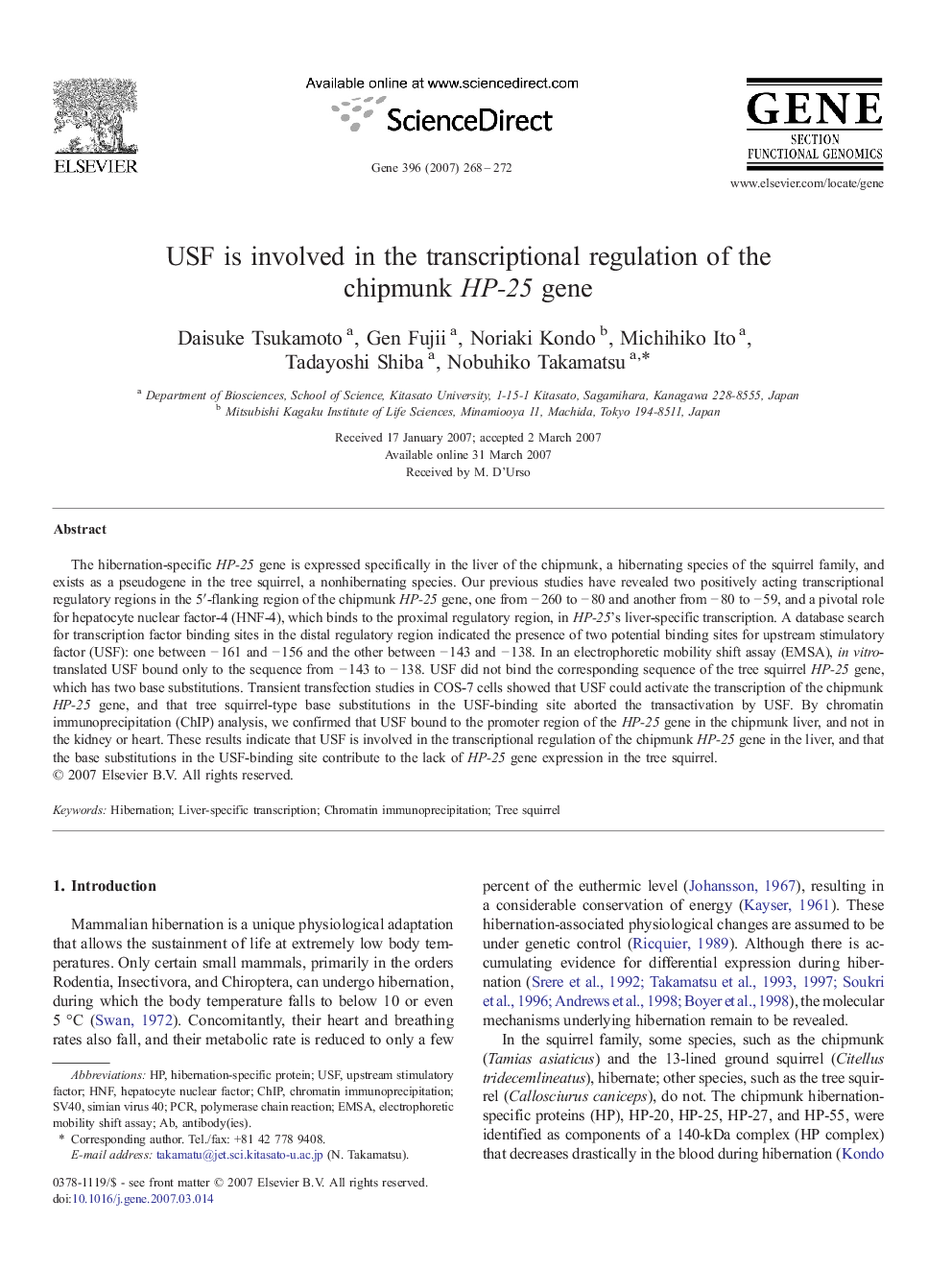| Article ID | Journal | Published Year | Pages | File Type |
|---|---|---|---|---|
| 2819738 | Gene | 2007 | 5 Pages |
The hibernation-specific HP-25 gene is expressed specifically in the liver of the chipmunk, a hibernating species of the squirrel family, and exists as a pseudogene in the tree squirrel, a nonhibernating species. Our previous studies have revealed two positively acting transcriptional regulatory regions in the 5′-flanking region of the chipmunk HP-25 gene, one from − 260 to − 80 and another from − 80 to − 59, and a pivotal role for hepatocyte nuclear factor-4 (HNF-4), which binds to the proximal regulatory region, in HP-25's liver-specific transcription. A database search for transcription factor binding sites in the distal regulatory region indicated the presence of two potential binding sites for upstream stimulatory factor (USF): one between − 161 and − 156 and the other between − 143 and − 138. In an electrophoretic mobility shift assay (EMSA), in vitro-translated USF bound only to the sequence from − 143 to − 138. USF did not bind the corresponding sequence of the tree squirrel HP-25 gene, which has two base substitutions. Transient transfection studies in COS-7 cells showed that USF could activate the transcription of the chipmunk HP-25 gene, and that tree squirrel-type base substitutions in the USF-binding site aborted the transactivation by USF. By chromatin immunoprecipitation (ChIP) analysis, we confirmed that USF bound to the promoter region of the HP-25 gene in the chipmunk liver, and not in the kidney or heart. These results indicate that USF is involved in the transcriptional regulation of the chipmunk HP-25 gene in the liver, and that the base substitutions in the USF-binding site contribute to the lack of HP-25 gene expression in the tree squirrel.
